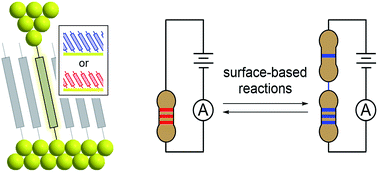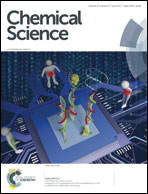Reversible on-surface wiring of resistive circuits†
Abstract
Whilst most studies in single-molecule electronics involve components first synthesized ex situ, there is also great potential in exploiting chemical transformations to prepare devices in situ. Here, as a first step towards this goal, we conduct reversible reactions on monolayers to make and break covalent bonds between alkanes of different lengths, then measure the conductance of these molecules connected between electrodes using the scanning tunneling microscopy-based break junction (STM-BJ) method. In doing so, we develop the critical methodology required for assembling and disassembling surface-bound single-molecule circuits. We identify effective reaction conditions for surface-bound reagents, and importantly demonstrate that the electronic characteristics of wires created in situ agree with those created ex situ. Finally, we show that the STM-BJ technique is unique in its ability to definitively probe surface reaction yields both on a local (∼50 nm2) and pseudo-global (≥10 mm2) level. This investigation thus highlights a route to the construction and integration of more complex, and ultimately functional, surface-based single-molecule circuitry, as well as advancing a methodology that facilitates studies beyond the reach of traditional ex situ synthetic approaches.



 Please wait while we load your content...
Please wait while we load your content...